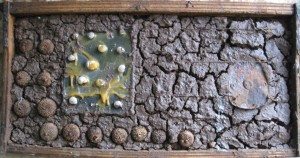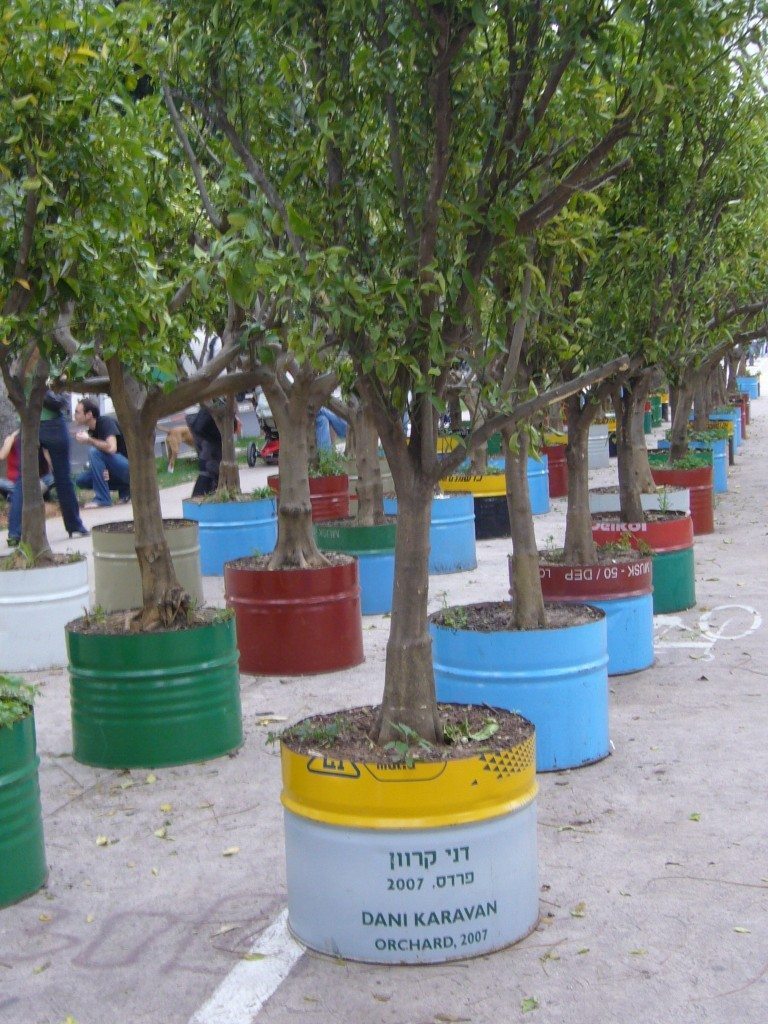The Israeli Forum for Ecological Art, is the only association of artists & scientists that I know of, in the world, which acts as a formal registered group, within an NGO state umbrella, to create an environmental change through art.
Celebrating the tenth year of voluntary activities, The Forum convened on July 23, 2009, for an interdisciplinary event, bringing together Zen teachers, lawyers, artists, ecologists, decision makers, curators, gallerists, to talk about new team-work with ecological artists, bridging in environmental conflicts. Some thirty artists shared their most current artwork; the fruit of dialogs with the environment through photography, installation, painting, poetry, and music.? Here, the public met a mosaic of deeds, for a better environment through the visual language.? The tenth exhibition is already a tradition. We created a virtual show, which does not leave traces of materials, and now is a permanent gallery on our new website- finally ( still in Hebrew only) – www.ecological-art.org.
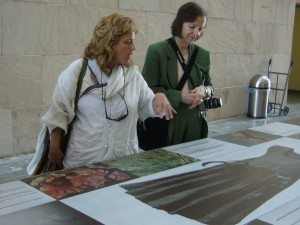 Broadening the borders of contemporary art into a dialog with- for instance- the chief scientist of the Nature & Park authority, who will take an active part at the event, or with the Beduine Community at the south of Israel, along with geologists, hydrologists and decision makers, and adopting the open spaces as a worthy art space for creation – brings about new definition for what is considered to be an esthetical work, what is the role of art in a damaged environment and why it is essential to include eco-artists in environmental team works.
Broadening the borders of contemporary art into a dialog with- for instance- the chief scientist of the Nature & Park authority, who will take an active part at the event, or with the Beduine Community at the south of Israel, along with geologists, hydrologists and decision makers, and adopting the open spaces as a worthy art space for creation – brings about new definition for what is considered to be an esthetical work, what is the role of art in a damaged environment and why it is essential to include eco-artists in environmental team works.
Still a lot to be done within the ‘classical’ art world. The tenth’ gathering also called, once again, to all artists to investigate environmental issues and channel their creative forces towards ‘responses’, ‘Investigations’, ‘actions’ for solving environmental issues. These words replace the traditional words of an artwork process; painting, sculpting, photographing. These words daylight the process itself as an artwork, instead of the material which the artist is using.
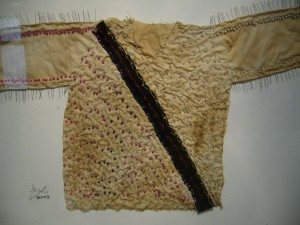 If this vocabulary will be used frequently, the artist will come back to being an influential figure, as s/he used to be in ancient societies.? “Aesthetics” as we know it, will be replaced into a different kind of beauty definition, which succeeds only if there are other levels at the same importance in the artwork.
If this vocabulary will be used frequently, the artist will come back to being an influential figure, as s/he used to be in ancient societies.? “Aesthetics” as we know it, will be replaced into a different kind of beauty definition, which succeeds only if there are other levels at the same importance in the artwork.
Israeli Forum for Ecological Art has created so far 12 yearly events, some of them with international eco-artists and scientists, and several projects and presentations along the years, all voluntary with minimum funding.
MORE ABOUT THE FORUM
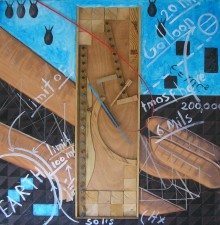 I founded the Israeli Forum for ecological Art, in 1999, after producing the first Art & Ecology conference in Israel. We still struggle for budgets, funding, volunteers etc. It is still not a needed profession, may be it is still not seen as a profession at all..?But getting to know some of my amazing colleagues in WEAD, in the eco-art dialog, at Greenmuseum and Ecoartspace , I believe we created the answer already.
I founded the Israeli Forum for ecological Art, in 1999, after producing the first Art & Ecology conference in Israel. We still struggle for budgets, funding, volunteers etc. It is still not a needed profession, may be it is still not seen as a profession at all..?But getting to know some of my amazing colleagues in WEAD, in the eco-art dialog, at Greenmuseum and Ecoartspace , I believe we created the answer already.
Our non-profit organization includes some 60 artists (and a small number of scientists, but only some thirty are paying member fee) who are prepared to devote their creative efforts to researching and responding to environmental problems, and with proper training will be able to acquire and pass on the tools, for example in the area of cooperating with scientists.
Our board includes a former Parliament member, Mossi Raz, an ecologist, Dr. Eliezer Frankenberg, and an artist, Dov Or-Ner.? The Photography & Eco-art Centre serves as the headquarter and support of the forum.
Images From Top Down
1. Rania, member Israeli Forum for Ecological Art.
2. Shai Zakai shows art historian/art writer Suzaan Boettger her photo installation of her work “Cement Dress” during the First Ecofeminist Art Conference, organized by The Israeli Forum for Ecological Art, for International Women’s Day, Holon, Israel. Boettger was Plenary Speaker at the Conference.
3. Artwork in Israeli Arab Women’s Exhibit, for International Women’s Day Celebration, Holon, Israel, March 2008
4. Gamal, artist, Israeli Forum for Ecological Art.
5. Israeli artist Dani Karavan, “Orchard,” temporary public art project, Tel Aviv, Israel, 2008
WEAD MAGAZINE ISSUE No. 1, CREATING CONNECTIONS
Published August 2010

